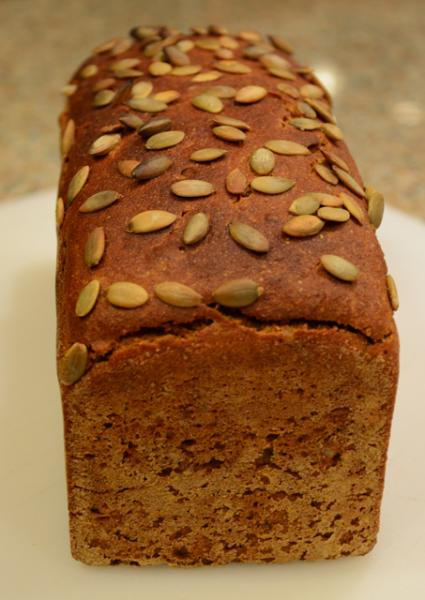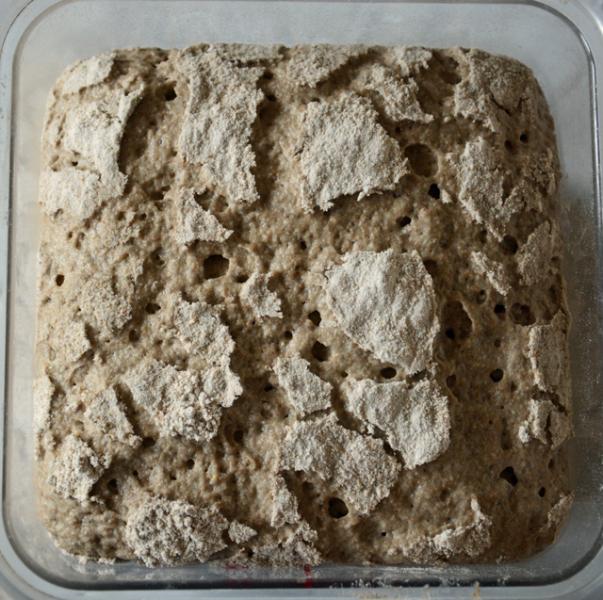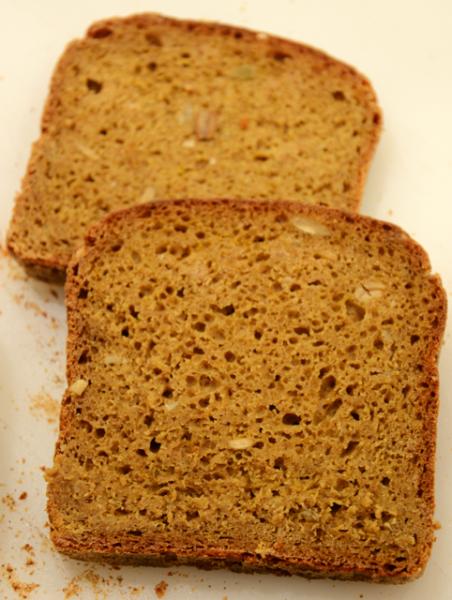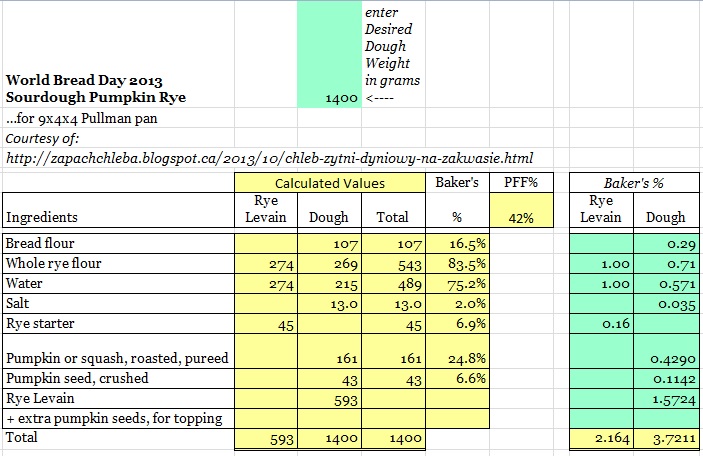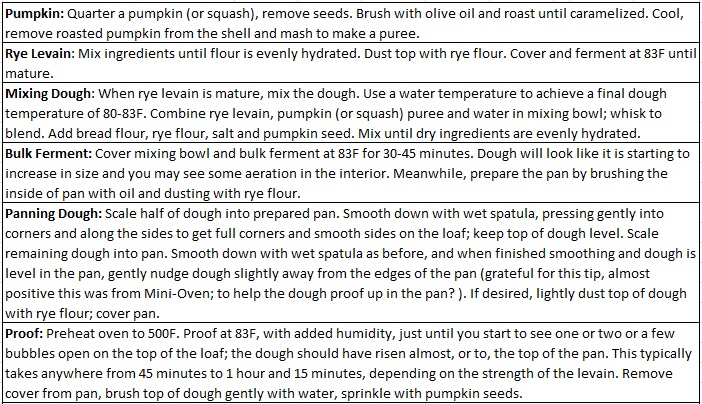
San Joaquin Sourdough: another variation produces the best flavor yet.
My San Francisco Sourdough starter from sourdo.com is now two weeks old. I made another pair of my San Joaquin Sourdough breads with it yesterday. I modified my formula somewhat. I used a 60% hydration starter fed with AP flour only. I increased the amount of starter by 50%. I used KAF AP flour for the dough. I used no added instant yeast.
|
Ingredients |
Weight |
Baker's Percentage |
|
Firm starter |
150 gms |
30.00% |
|
KAF AP flour |
450 gms |
90.00% |
|
BRM Dark Rye flour |
50 gms |
10.00% |
|
Water |
360 gms |
72.00% |
|
Salt |
10 gms |
2.00% |
Procedure
-
Mix the firm starter (1:3:5 – Starter:Water:Flour). Let it ferment at room temperature for 12 hours.
-
Pour the water into a large mixing bowl. Add the starter and dissolve it in the water.
-
Add the flours and mix to a shaggy mass. Cover tightly and let it sit for 20-60 minutes.
-
Sprinkle the salt over the dough and mix thoroughly using the “stretch and fold in the bowl” technique. Let it rest for 30 minutes.
-
Repeat the “stretch and fold in the bowl” for 30 strokes 2 more times at 30 minute intervals.
-
Transfer the dough to a lightly floured board, and do one stretch and fold.
-
Form the dough into a ball and place in a lightly oiled bowl. Note the volume of the dough. Cover the bowl tightly. Let it rest for 30 minutes.
-
Repeat the stretch and fold on the board. Reform the dough into a ball and replace it in the bowl.
-
Allow the dough to continue fermenting until the volume has increased 50%.
-
Cold retard the dough for about 20 hours. (The dough had more than doubled and was full of large and small bubbles.)
-
Take the dough out of the refrigerator and immediately transfer it to a lightly floured board.
-
Divide the dough into two equal pieces and pre-shape them into logs or rounds, depending on whether you want to make boules or bâtards. Cover the pieces with plasti-crap and let them rest for 60 minutes. (Give them a shorter rest if the kitchen is very warm. You don't want them to expand very much, if any.)
-
Pre-heat the oven to 500ºF with a baking stone and your steaming method of choice in place.
-
Shape the pieces and place them in bannetons or on a couche. Cover the loaves and proof them until they have expanded by 50-70%. (30-45 minutes)
-
Pre-steam the oven. Then transfer the loaves to a peel (or equivalent). Score them, and load them onto your baking stone.
-
Turn the oven down to 460ºF.
-
After 12 minutes, remove your steaming apparatus. Turn the loaves 180º, if necessary for even browning.
-
Continue to bake the loaves for another 15-18 minutes or until their internal temperature is 205ºF.
-
Turn off the oven, but leave the loaves on the stone with the oven door ajar for another 7-10 minutes to dry the crust.
-
Transfer the loaves to a cooling rack.
-
Cool the loaves completely before slicing.
The loaves were already singing when I took them out of the oven. The crust developed crackles, which can be credited to the use of AP rather than higher gluten flour and the drying in the oven (Step 19., above).
The crumb was nice and open.
The crust was crisp when first cooled and crunchy/chewy the next morning. The flavor was sweet and wheaty, like a good baguette, with the barest hint of sourness. This was po
ssibly the best tasting San Joaquin Sourdough I've made. I think I'm going to stick with this version. Next time, I may use this dough to make baguettes.
David
Submitted to YeastSpotting




 Explanations
Explanations  Baguettes à cuire
Baguettes à cuire Oven
Oven Baguettes
Baguettes 

















